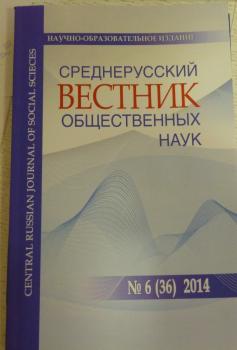The article is devoted to the search for solutions to the problem of non-proliferation of weapons of mass destruction through the establishment of the International Bank for low-enriched uranium (LEU Bank) under the control of the International Atomic Energy Agency (IAEA) on the territory of the Kazakhstan Republic. This initiative was supported by the IAEA because of growing threats of proliferation of nuclear weapons and radioactive materials, as well as in the context of discussions on the so-called "Iranian nuclear dossier", lasting for more than 10 years. The fundamental resolution of the crisis around Iran took place on July 15, 2015 through the efforts of the "six" negotiators and the Iranian presence generated for alternative ways of development of nuclear energy without the need for Iranian soil process stages of the nuclear cycle. The alternative proposed to Iran involves including the creation of the International Bank for LEU IAEA services which Iran could use. The operator of the project was the Kazakhstan Republic, which includes a number of country specific set of requirements. The article analyzes the conditions for functioning of the Bank, technological requirements of the operator of the project, as well as analysis of the challenges and threats to regional and global scale due to the implementation of the project. The author comes to a conclusion about the possibility of emergence of geopolitical risks on a regional scale.
Low Enriched Uranium Bank, IAEA, non-proliferation of WMD, security, Kazakhstan, Iran
1. Baklitskiy A. Iranskoe yadernoe soglashenie: po kanatu bez strakhovki. Indeks bezopasnosti. - 2015. - № 4 (115). - S. 39-60.
2. Davydov A.A. Vashingtonskie teni nad tegeranskoy sdelkoy. Puti k miru i bezopasnosti. - 2015. - № 2 (49). - S. 67-70.
3. Evseev V. «Istoricheskiy» uspekh peregovorov v Vene. Obozrevatel´ - Observer. - 2015. - № 10 (309). - S. 33-41.
4. Popov D. Zachem Pentagonu biologicheskaya laboratoriya v Kazakhstane?. Voennoe obozrenie. - URL: http://topwar.ru/37787-zachem-pentagonu-biologicheskaya-laboratoriya-v-kazahstane.html (Data obrashcheniya: 01.09.2016).
5. Popov D. S. Istoricheskiy opyt realizatsii amerikanskikh programm yadernoy demilitarizatsii Kazakhstana v kontekste interesov Rossii i ee soyuznikov. Problemy natsional´noy strategii. - 2015. - № 4 (31).- S. 92-113.
6. RF i MAGATE podpisali soglashenie o tranzite nizkoobogashchennogo urana. - URL: http://ria.ru/atomtec/20150618/1076628164.html (Data obrashcheniya: 27.08.2016).
7. Fenenko A. Strategiya «prinuditel´nogo razoruzheniya» i mezhdunarodnyy biznes. Mezhdunarodnye otnosheniya. - T.3. - №3 (9). - 2005. - URL: http://www.intertrends.ru/nineth/004.htm (Data obrashcheniya: 02.09.2016).
8. Kharitonova N.I. Kazakhstan kak «yadernyy posrednik». Evroaziya: analitika i prognozy. - 2015. - № 5. - S. 22-27.
9. Shpionskie strasti. Iran, uran … i Kazakhstan. - URL: http://www.pravda.ru/world/asia/30-12-2009/1006545-0/ (Data obrashcheniya: 20.08.2016).
10. Shcherbakova O., Klyachin V. Problema bezopasnosti AES. Obozrevatel´ - Observer. - 2014. - № 2 (289). - S. 33-40.





